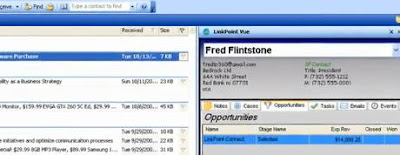Earlier today, I received an email from a fellow Salesforce.com User Group member,
"Hi JP, I was just on a partner webinar with Salesforce and they are reiterating the branding rules in their [Salesforce Partner Terms & Conditions Agreement]. One of the rules is no "force" in a company or product name. I don't know if this is applicable if you are not a partner, but wanted to mention it to the key Force Monkey!"
I understand the position entirely. As Salesforce.com rebrands it's identity around the Force.com name, it has to be protective of it. Customers might presume that any other company that uses "Force" in their own product or company is endorsed or more directly affiliated with Salesforce.com. At the same time, I'm a rebel at heart!
Here's the twitter conversation that spontaneously led to the sub-title change on this blog:
So there you go, the source and inspiration for the new blog sub-title. Thanks, @gbreavin, @IdaApps and @DarthGarry for the mid-day laugh. Ha!
I should explain where Force Monkey comes from, I get asked about it often. The origin actually predates Salesforce's rebranding on the Force.com name.
About 4-5 years back, I worked as a Technical Support Engineer for a small, start-up company. We had just brought in a consulting firm to help us select a CRM vendor, and settled on Salesforce.com. The consulting partner gave a price tag for helping us with the initial deployment and data migration, which weighed in somewhere near half my annual salary -- and was a four month project. We were actually at risk of not going forward with the CRM deployment, because the company wasn't prepared to make that investment.
I told my boss, "The consultants have been great in helping us narrow down a CRM vendor, but I think I can manage the roll-out faster. Let me take a crack at it."
He did. I was surprised at the speed and efficiency with which we could customize the tool. I rolled out the company's first Salesforce.com deployment in just four weeks. After the initial turn-up, I scheduled a two week window for doing rapid changes / updates to the package, based on user needs and requests.
One of the Resident Engineers came in to the office that I shared with another colleague and asked, "What are you force monkies doing in here? This is crazy fast, I just asked for that feature this morning!"
The name stuck, and Force Monkey found it's way to my "unofficial" job title. I've since done several consulting engagements and freelance projects as Force Monkey and Force Monkey Labs, although I've never incorporated as such. Now that it's been expressly forbidden, I just might have to!






